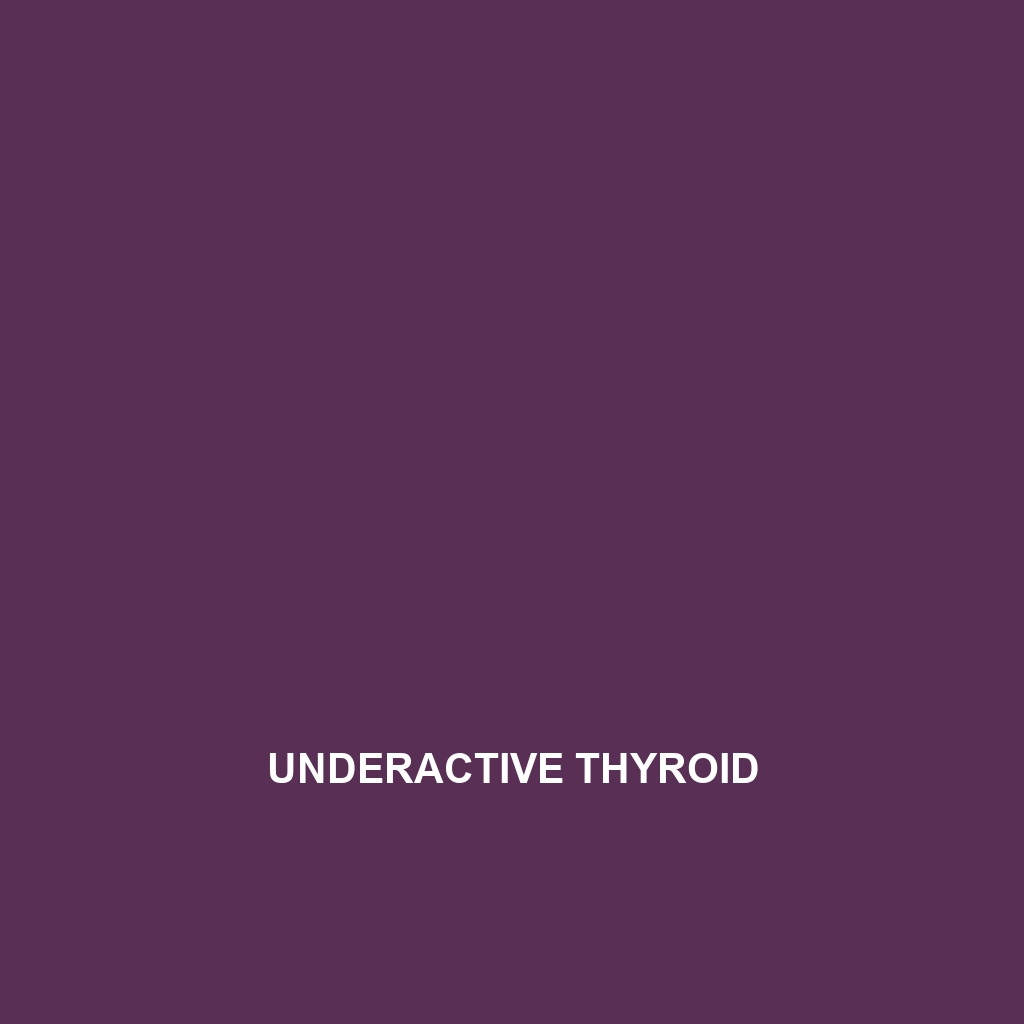Underactive Thyroid:
Definition and Description of Underactive Thyroid:
Underactive thyroid, medically known as hypothyroidism, occurs when the thyroid gland fails to produce sufficient amounts of thyroid hormones, which are crucial for regulating metabolism, energy generation, and overall bodily functions. This condition can lead to a variety of health issues due to the slow-down of the body’s metabolic processes, impacting various systems and creating an array of symptoms that affect a person’s quality of life.
Causes of Underactive Thyroid:
Hypothyroidism can arise from several underlying causes, including autoimmune diseases such as Hashimoto’s thyroiditis, where the immune system attacks the thyroid gland. Other possible causes include iodine deficiency, radiation therapy, surgical removal of the thyroid, certain medications, and congenital conditions. Genetic predispositions may also play a role, as individuals with a family history of thyroid disease may be more susceptible.
Associated Symptoms of Underactive Thyroid:
Common symptoms associated with an underactive thyroid include fatigue, weight gain, sensitivity to cold, constipation, dry skin, hair loss, and muscle weakness. Additionally, individuals may experience depression, slowed heart rate, and difficulty concentrating, which can significantly impact daily functioning and well-being.
Diagnosis of Underactive Thyroid:
Healthcare professionals typically diagnose hypothyroidism through a combination of clinical evaluations and blood tests. The most common test measures Thyroid-Stimulating Hormone (TSH) levels, and an elevated TSH level alongside low levels of free thyroxine (T4) suggests an underactive thyroid. The presence of thyroid antibodies may also be checked to help determine the underlying cause.
Risk Factors for Underactive Thyroid:
Risk factors for developing hypothyroidism include being over the age of 60, being female, having a family history of thyroid disease, and having autoimmune conditions such as type 1 diabetes or rheumatoid arthritis. Lifestyle factors such as excessive dietary iodine or history of radiation treatment to the neck can also contribute.
Complications of Underactive Thyroid:
If left untreated, hypothyroidism can lead to several complications, including cardiovascular issues due to increased cholesterol levels, myxedema coma — a rare but life-threatening condition, infertility, and adverse effects during pregnancy, such as developmental issues in the fetus. Long-term, it can also result in mental health changes, including severe depression.
Treatment Options for Underactive Thyroid:
The primary treatment for hypothyroidism involves hormone replacement therapy, typically with levothyroxine, which helps normalize hormone levels and alleviate symptoms. Patients must undergo regular monitoring to adjust dosages as needed. In addition, maintaining a balanced diet rich in essential nutrients can support thyroid health.
When to See a Doctor for Underactive Thyroid:
Individuals should consider seeking medical advice if they experience persistent fatigue, unexplained weight gain, or other related symptoms. Early diagnosis and treatment can prevent the progression of the condition and improve overall health outcomes.
Prevention of Underactive Thyroid:
While not all cases of hypothyroidism are preventable, individuals can take steps such as ensuring adequate iodine intake, particularly in iodine-deficient areas, and managing autoimmune conditions appropriately. Regular health check-ups can also lead to early detection and management of potential thyroid issues.
Statistics and Prevalence of Underactive Thyroid:
Hypothyroidism affects approximately 4.6% of the U.S. population aged 12 and older, with higher prevalence rates among women, particularly those over the age of 60. It is estimated that about 20 million Americans have some form of thyroid disease, yet many are unaware of their condition.
Personal Stories or Case Studies about Underactive Thyroid:
Numerous individuals have shared their journeys dealing with hypothyroidism, highlighting the struggle with symptoms that often go misdiagnosed. Expert opinions from endocrinologists emphasize the importance of awareness and early intervention, which can significantly improve the quality of life for patients.
Myths and Misconceptions about Underactive Thyroid:
A common myth about hypothyroidism is that it solely results from aging or weight gain. In reality, various genetic and environmental factors contribute to its onset. Furthermore, some believe that thyroid conditions can be cured; however, it is often a lifelong management issue requiring consistent treatment and monitoring.
Support and Resources for Underactive Thyroid:
Those dealing with hypothyroidism can find support and resources through various organizations, both online and in local communities. For more information, visit this support page for additional resources and help.
Conclusion about Underactive Thyroid:
Hypothyroidism is a manageable condition that requires proper diagnosis, treatment, and ongoing management. Understanding its symptoms, causes, and available resources is crucial for those affected. If you suspect you may have an underactive thyroid, consider reaching out to a healthcare professional to discuss your concerns. By taking proactive steps, you can manage your health effectively and lead a fulfilling life.
